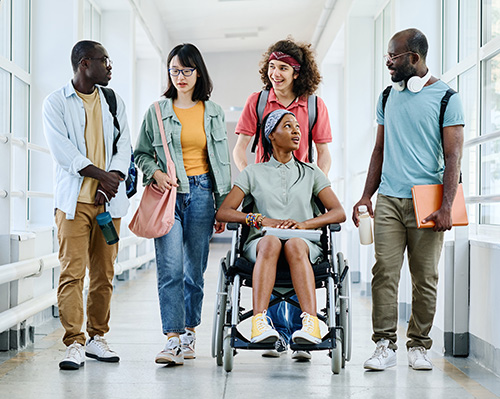How do differences in students’ backgrounds and characteristics affect their academic performance?
Page 1: Introduction to Special Student Populations

Students in classrooms across the nation represent different races, ethnicities, cultures, and socioeconomic backgrounds, and they speak many different languages. Further, these students often exhibit a range of academic, physical, and social abilities or skills. Consider the following statistics.
- During the 2020–2021 school year, 46% of public school students were White and 54% were students of color.
- More than 1,000 cultures are represented by students in the United States.
- About 10% of students in the United States are English learners.
- In many school districts, students and families* speak over 100 different languages.
- In 2020, 16% of children under the age of 18 were living in poverty.
- During the 2023–2024 school year, approximately 15% of public school students ages five to 21 received special education services. Of these students:
- 68% spent the majority of their school day (i.e., at least 80%) in the general education classroom.
- 15% spent a portion of their school day (i.e., 40% to 80%) in the general education classroom.
Whether urban, suburban, or rural, schools are enrolling greater numbers of students from a range of backgrounds. Even in a classroom of students with presumably similar European American backgrounds, educators will find that their students have very different family histories, with traditions and customs tracing to countries such as England, Italy, France, and Germany. Additionally, students come from backgrounds that include a spectrum of family situations (e.g., two-parent, adoptive, divorced, single-parent, households headed by grandparents or other relatives).
The remainder of this module will present information about four areas in which educators will commonly encounter student differences: culture, language, exceptionality, and socioeconomic status. Before we delve into these aspects, however, it is important for teachers to understand their perceptions about students who come from backgrounds different from their own. Moreover, they need to understand how these perceptions might influence their expectations for their students and, subsequently, how they teach.
*Families are defined in a number of ways and may include biological parents, stepparents, and adoptive parents. This includes anyone serving in place of a biological parent, such as other family members (e.g., grandparents, aunts, uncles, siblings, cousins), guardians, foster parents, or court-appointed surrogate parents. Some families might also consider others who are actively involved in caring for their child (e.g., neighbors, clergy, community leaders) to be a part of their extended family.